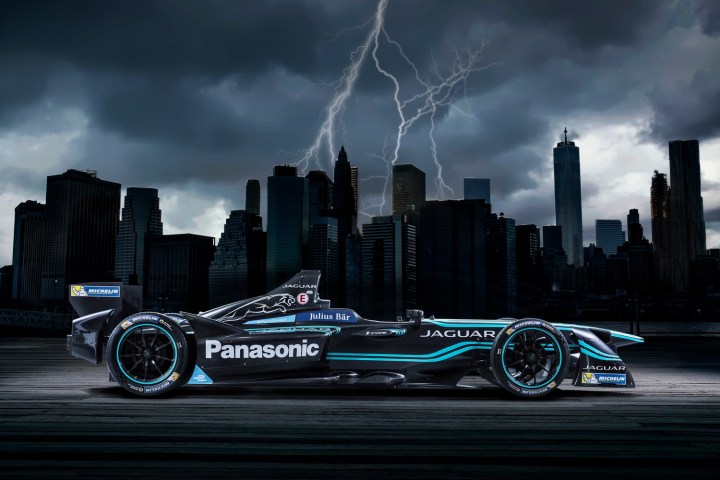
At a press conference on Wednesday, Formula E CEO Alejandro Agag announced the electric-car racing series will come to New York on July 29 and 30, 2017, for a two-round event that will mark the end of Formula E’s current season. The New York City ePrix will take place in the Red Hook neighborhood of Brooklyn and will be the first race featuring open-wheel cars ever held in New York with sanctioning from the International Automobile Federation (FIA), which also runs Formula One and the World Endurance Championship.
Like all Formula E races, the New York City event will take place on a temporary street circuit. Formula E prefers events within large cities rather than permanent racetracks — which tend to be in out-of-the-way areas — to maximize exposure. The 1.21-mile Brooklyn circuit will encompass Pier 11 and the Brooklyn Cruise Terminal on the Red Hook waterfront. The circuit is still subject to final approval by the FIA.
Read more: Audi is all charged up for Formula E
The newly formed Panasonic Jaguar Racing team is particularly pumped for Formula E’s New York debut. Because Jaguar North America is headquartered in nearby Mahwah, New Jersey, the team considers the New York City ePrix to be its home race. Jaguar announced its intention to join Formula E in December 2015 and unveiled its I-Type 1 race car earlier in September.
This is not the first time a race series has tried to tap the lucrative New York City market. Different groups have tried to put on a Formula One race in the New York City area multiple times, most recently in 2010, when F1 boss Bernie Ecclestone announced plans for a Grand Prix of America on a street circuit in New Jersey, just across the Hudson River from Manhattan. That effort quickly fizzled, though.
We will have to see if Formula E can do better. The series’ novelty and a location for the race that is closer to the heart of the city could be assets, but a lot can happen between now and July. In the meantime, the Formula E season kicks off October 9 in Hong Kong.
Editors' Recommendations
- Robots deployed to assist New York City police … again
- New York International Auto Show canceled for 2020
- New York City orders all entertainment venues to close starting March 17
- New York Auto Show postponed due to coronavirus concerns
- Uber and Lyft face a cheaper ridesharing rival in New York City


